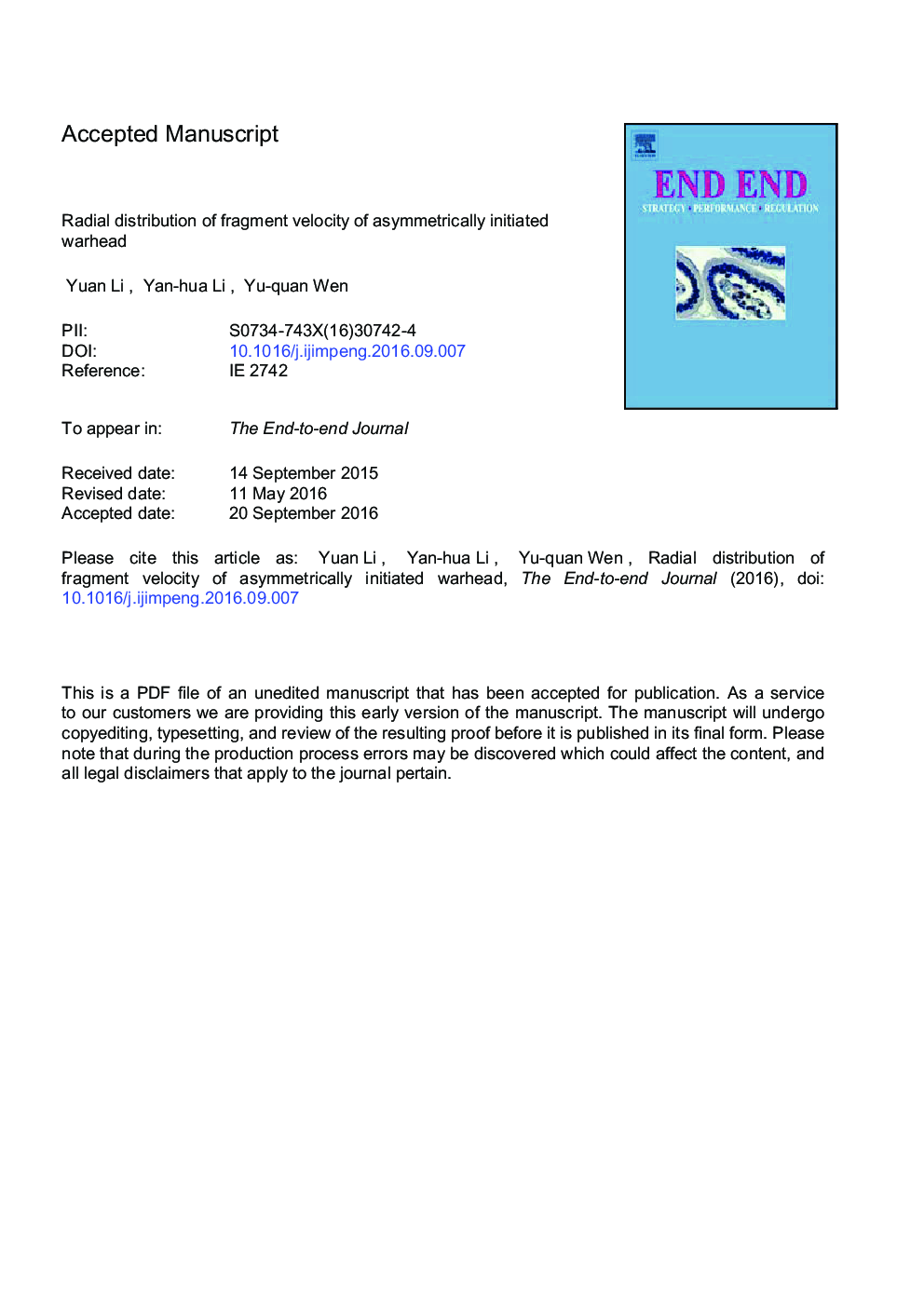| Article ID | Journal | Published Year | Pages | File Type |
|---|---|---|---|---|
| 5015652 | International Journal of Impact Engineering | 2017 | 32 Pages |
Abstract
Cylinder casing filled with explosive under asymmetric initiation is an easy way to increase the warhead efficiency. The radial distribution of fragment velocity is an important design parameter for the asymmetrically initiated warhead. Available formulas either can only apply to calculating fragment velocity of certain radial direction, or their applications need experiments to determine unknown parameters. Establishment of a new math model to calculate velocity distribution was presented in this paper. Firstly, in the central section of warhead cylinder (treated as 2D problem), a stationary point was proposed existing between the asymmetric initiation point and the warhead center. From this stationary point the warhead can be radially cut into many segments of explosive and fragments. Then the ratios of charge mass to casing mass of those segments were computed, corrected and used to obtain fragments velocities by Gurney formula. Most importantly, the position of the stationary point was theoretically determined by the one-dimensional detonation pushing piston theory (Zhang et al., 2001) [14]. The math model established in the present work was finally validated with the numerical modeling and the experiment results. The results indicate that the model can accurately compute the radial distribution of fragment velocity of asymmetrically initiated warhead and is completely theoretically enclosed, needing no experiments to determine unknown parameters. In addition, the fragment velocity distribution gotten from experiments was found to be different with the theoretical velocity distribution near the initiation side because of influence of the initiator volume.
Keywords
Related Topics
Physical Sciences and Engineering
Engineering
Mechanical Engineering
Authors
Yuan Li, Yan-hua Li, Yu-quan Wen,
